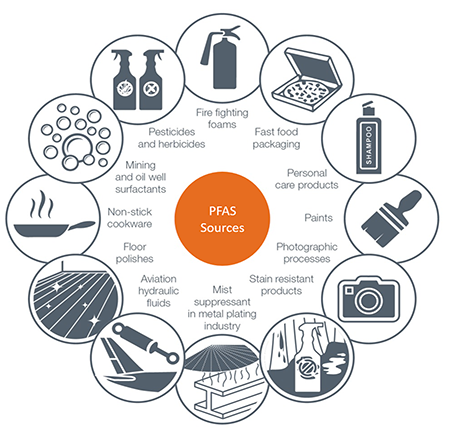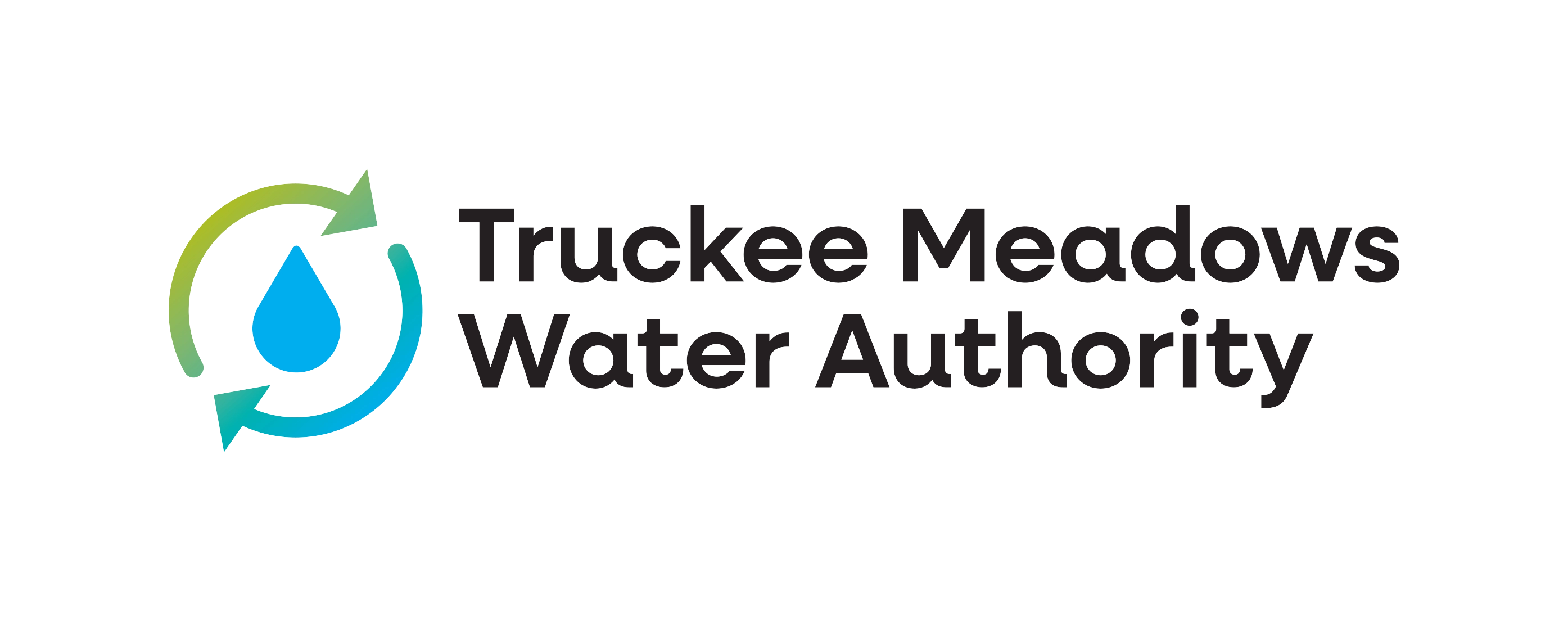What are PFAS?
 PFAS (per- and polyfluoroalkyl substances) are a group of manufactured chemicals that have been used in industry and consumer products since the 1940s because of their useful properties. There are thousands of different PFAS, some of which have been more widely used and studied than others.
PFAS (per- and polyfluoroalkyl substances) are a group of manufactured chemicals that have been used in industry and consumer products since the 1940s because of their useful properties. There are thousands of different PFAS, some of which have been more widely used and studied than others.
Modern-day use of PFAS is everywhere. It is found in fast-food packaging, non-stick pans, waterproofing products, clothing, makeup and in numerous other products that people use every day.
Learn More at: EPA - PFAS Information Page
Why Are We Hearing About PFAS Now?
With the improvement of testing technology in recent years, and because of its widespread use, PFAS in trace amounts is being found virtually everywhere—water, air, soil, and in animals around the world.
Are PFAS Harmful?
Exposure to high levels of PFAS may lead to adverse health effects, and studies are ongoing to determine if low-level exposure over time has any impact on health.
The New EPA PFAS Rule:
In early 2023, EPA took a key step to protect public health by proposing to establish legally enforceable levels for six Per- and Poly-fluoroalkyl (PFAS) compounds known to occur in drinking water. On April 10, 2024, EPA released the final PFAS Rule (Rule). This Rule sets limits for five individual PFAS compounds including PFOA and PFOS, and it also sets a limit for a mixture of any two or more of four PFAS.
The final PFAS Rule sets maximum contaminant levels (MCLs) for PFOS and PFOA at 4 parts per trillion each. This Rule requires TMWA to complete initial monitoring by 2027 and implement solutions by June 25, 2029, to ensure water sources do not exceed the new MCLs.
See Also: EPA - Our Current Understanding of the Human Health and Environmental Risks of PFAS
What is TMWA doing to identify PFAS occurrence?
TMWA participated in EPA’s Unregulated Contaminant Monitoring Rule 3 (UCMR3) from 2013 to 2015, which required water systems to test for six different PFAS compounds. No PFAS contaminants were detected in our sources from that sampling event using the minimum reporting levels required at that time.
Currently, TMWA is participating in EPA’s UCMR5, which monitors for 29 PFAS contaminants, including PFOS and PFOA. Like UCMR3, this is a three-year sampling event but with lower reporting levels for each of the compounds. The report summarizing any contaminants detected in 2023 will be published in July 2024: https://quality.tmwa.com/.
Additionally, TMWA proactively started monitoring at each of its sources in preparation for the implementation of the new PFAS Rule. This initial monitoring is also a three-year sampling event, which is consistent with the Rule.
What is TMWA doing for ongoing PFAS assessment?
The new Rule goes into effect in 2029, and TMWA will confidently meet these new standards prior to the effective date. TMWA remains staunchly committed to providing drinking water that meets all EPA Drinking Water Standards whether it’s PFAS, or any other contaminant. Once all the data has been collected, TMWA staff will better understand the PFAS levels in any given source and will be able to make informed decisions regarding how sources are impacted and evaluate treatment options, if necessary.
How do I know if my private well water is contaminated with PFAS?
PFAS compounds are odorless and tasteless, so to determine if the compounds are present at detectable levels, your well must be tested. For more information regarding available state, local and federal resources to assist domestic well owners, click here.
Additional Action:
Federal Level
To learn more about Key EPA Actions with partners across the country to more efficiently detect and measure PFAS in our air, water, soil, and wildlife, along with how to remove, manage and dispose of PFAS, click here.
State of Nevada
To see the Final PFAS Action Plan, a set of steps to determine many objectives including “the location and extent of potentially significant discharges or releases of PFAS in the State,” click here.
Helpful Links:
EPA - Key Action to Address PFAS
EPA - Our Current Understanding of the Human Health and Environmental Risks of PFAS
US Food & Drug Administration - Per- and Polyfluoroalkyl Substances (PFAS)
Centers for Disease Control and Prevention
